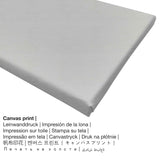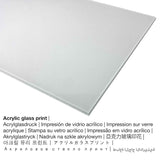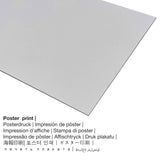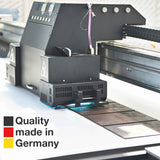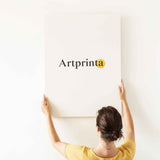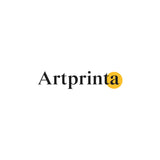Amaghị ama, 1134 - Ọnwụnwa nke Kraịst site n’aka ekwensu - mbipụta nka mara mma
Ụtụ gụnyere. Mbupu gbakọrọ na ndenye ọpụpụ.
In 1134 Unknown painted this nka ochie masterpiece na aha "The Temptation of Christ by the Devil". The 880 year old work of art had the size - 69 1/2 in × 9 ft, 10 in (176,5 × 299,7 cm) and was painted with fresco transferred to canvas. This artwork is in the the art collection of Museumlọ ihe ngosi nka nke Obodo. A na-enye ihe osise ngalaba ọha a site n'ikike nke The Metropolitan Museum of Art, New York, The Cloisters Collection and Gift of E.B. Martindale, 1961. Ọzọkwa, ihe nkiri ahụ nwere kreditline ndị a: The Cloisters Collection and Gift of E.B. Martindale, 1961. N'elu nke ahụ, itinye n'usoro dị na nhazi ala ma nwee oke akụkụ nke 16: 9, nke pụtara na ogologo bụ 78% ogologo karịa obosara.
Artwork description by the museum's website (© Copyright - The Metropolitan Museum of Art - Museumlọ ihe ngosi nka nke Obodo)
The hermitage of San Baudelio de Berlanga was constructed in the beginning of the eleventh century at the heart of the frontier between Islamic and Christian lands. One hundred fifty years later, its extraordinary palm-vaulted interior was transformed with the addition of two cycles of vibrant paintings: an extensive Christological cycle at the top and scenes of hunting and animals at the bottom, derived from Islamic art. The large figures of the biblical cycle, the clear outlines, and the radiant colors ensured that the story would be legible from the floor. The fresco conflates three episodes from Christ's Temptation. At the left, the Devil dares Christ to turn stones into bread. In the middle, Satan challenges Christ, standing on the gable of the Temple, to throw himself down. The angel talking to a demon at the right refers to the last temptation of Christ, who, after refusing to worship the Devil, is ministered by angels.
Nkọwa nka ahaziri
| Aha ọrụ nka: | "The Temptation of Christ by the Devil" |
| Nhazi nke ọrụ nka: | sere |
| Nhazi nka: | nka ochie |
| Nhazi oge: | 12th narị afọ |
| Emepụtara n'afọ: | 1134 |
| Ogologo afọ nka nka: | karịa afọ 880 |
| Usoro nka izizi: | fresco bufere na kwaaji |
| Nha ihe osise izizi: | 69 1/2 in × 9 ft, 10 in (176,5 × 299,7 cm) |
| Ụlọ ihe ngosi nka / mkpokọta: | Museumlọ ihe ngosi nka nke Obodo |
| Ebe ngosi nka: | New York City, New York, Njikota Obodo Amerika |
| website: | www.metmuseum.org |
| Ụdị nka nka: | ngalaba ọha |
| Site n'aka: | The Metropolitan Museum of Art, New York, The Cloisters Collection and Gift of E.B. Martindale, 1961 |
| Ebe E Si Nweta: | The Cloisters Collection and Gift of E.B. Martindale, 1961 |
Banyere onye na-ese ihe
| aha: | Unknown |
| Ọrụ: | onye na-ese ihe |
| Nkewa onye nka: | nna ukwu ochie |
Ngwa ngwaahịa ị nwere ike ịhọrọ
Anyị na-enye ụdị dị iche iche nha na ihe maka ngwaahịa ọ bụla. Nhọrọ ndị a dị maka n'otu n'otu:
- Mbipụta kwaaji: A canvas print is a printed canvas stretched on a wood frame. The advantage of canvas prints is that they are relatively low in weight. That means, it is easy to hang up your Canvas print without extra wall-mounts. Hence, canvas prints are suitable for all types of walls.
- Glass acrylic ebipụtara (nke nwere ezigbo mkpuchi iko n'elu): A glossy print on acrylic glass, which is often named as a plexiglass print, will transform the original artwork into wonderful home décor. Above all, the acrylic glass fine art print makes a great alternative to aluminium or canvas art prints. The work of art will be manufactured with the help of modern UV direct print machines. It creates stunning, intense colors. The great advantage of an acrylic glass fine art copy is that contrasts and also color details become more visible with the help of the fine tonal gradation of the picture.
- Akwụkwọ mmado ebipụtara (akwa akwa akwa): Our poster print is a printed flat cotton canvas with a fine structure on the surface. Please keep in mind, that depending on the size of the canvas poster print we add a white margin of around 2-6cm around the painting to facilitate the framing.
- Mbipụta nke aluminom: These are metal prints on aluminium dibond material with an outstanding depth. A direct Aluminium Dibond Print is the ideal introduction to the sophisticated world of art prints made with aluminum. The bright and white sections of the artpiece shimmer with a silk gloss, however without glow. The colors of the print are bright and vivid, the fine details of the print appear very clear, and you can truly notice the matte appearance of the surface.
Nkọwa ngwaahịa
| Ụdị ngwaahịa: | mmepụta nka |
| Usoro mmeputakwa: | mmeputakwa n'ụdị dijitalụ |
| Produzọ mmepụta: | mbipụta dijitalụ (Mbipụta UV ozugbo) |
| Nlụpụta: | emere na Germany |
| Ụdị ngwaahịa: | na mmepụta ihe |
| Ojiji ngwaahịa: | nka mgbidi, foto mgbidi |
| Nhazi onyonyo: | usoro odida obodo |
| Ụdị anya: | 16: 9 |
| Ntụgharị nkọwa akụkụ akụkụ: | ogologo bụ 78% ogologo karịa obosara |
| Akwa ngwaahịa dị: | akwụkwọ mmado (akwụkwọ kwaaji), mbipụta enyo acrylic (nwere ezigbo mkpuchi iko), mbipụta akwa akwa, mbipụta ọla (aluminium dibbond) |
| Nhọrọ nke Canvas Mbipụta (akwa akwa na etiti ihe ndọtị): | 90x50cm - 35x20", 180x100cm - 71x39" |
| Mbipụta iko acrylic (nwere ezigbo mkpuchi iko) nhọrọ nha: | 90x50cm - 35x20" |
| Nhọrọ nha nke akwụkwọ mmado (akwụkwọ kwaaji): | 90x50cm - 35x20" |
| Nhọrọ nha nke mbipụta aluminom (aluminium dibond material) | 90x50cm - 35x20" |
| Nhazi nke nnomi nka: | ngwaahịa anaghị emebi emebi |
Disclaimer: We try whatever we can in order to depict our products as exact as possible and to showcase them visually on the respective product detail pages. Although, the colors of the printing material and the imprint may diverge somehwat from the presentation on the monitor. Depending on the screen settings and the condition of the surface, color pigments may not be printed one hundret percent realistically. Since all the fine art prints are processed and printed by hand, there may also be minor deviations in the motif's exact position and the size.
Ederede a bụ ikike ọgụgụ isi ma chekwaa ya site na nwebisiinka © - Artprinta (www.artprinta.com)


